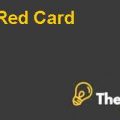Project Case Study Analysis
Project Background
Horizon Water Beds, an established company in the furniture industry with 20 years of experience, is poised for an exciting new venture. Owner Glen Fisher is considering diversifying the company's product line to include the manufacturing of sofas and love seats. This expansion plan takes advantage of an idle factory worth $1,000,000, alongside a $1,000,000 investment in new equipment. The project spans six years, aiming to capture the market with a unique blend of quality and affordability.
With a focus on sustainable growth, Glen's strategy anticipates challenges such as fluctuating production costs, pricing dynamics, and changing consumer demand. To navigate these factors effectively, the project will consider elements like depreciation, net working capital, taxes, and a 13% discount rate. This project presents an exciting opportunity for Horizon Water Beds to evolve and thrive in a dynamic market.
In a dynamic market driven by consumer preferences and cost management, the project explores the financial feasibility of establishing a furniture manufacturing venture. Focused on producing sofas and love seats, the project considers varying scenarios, from a baseline case to best and worst-case scenarios, while incorporating factors like sales growth, production costs, and taxation.
Through meticulous financial analysis, it aims to determine the project's (NPV), and (IRR), and assess the sensitivity of NPV to changes in price and units sold. Furthermore, consider the impact of net working capital on the project's cash flows, allowing for a comprehensive evaluation of its profitability.
Baseline (NPV and IRR)
The baseline NPV is $3,294,118, and the baseline IRR is approximately 55.62%. These financial metrics indicate the attractiveness and profitability of the proposed project to expand Horizon Water Beds' operations to manufacture sofas and love seats. A favorable NPV proposes that the project is predictable to produce substantial revenues, beyond the original investment of $1,000,000.
Meanwhile, the IRR of 55.62% is well above the project's discount rate of 13%, further confirming its potential for profitability. In summary, the baseline analysis shows that this project has the potential to create significant value for the company, making it a favorable investment opportunity.
NPVs Sensitivity to Price
The NPV's sensitivity to price changes indicates how the project's profitability is affected by variations in the prices of sofas and love seats.
Price Decrease by 10%
When prices decrease by 10%, the project remains economically viable. The NPV is approximately $2,526,552, and the IRR is around 39.62%. This suggests that even with a price decrease, the project is expected to generate positive returns. The impact of the price decrease on the NPV and IRR is a reduction compared to the baseline scenario, but the project is still financially attractive.
Price Increase by 10%
Conversely, when prices increase by 10%, the project becomes even more financially attractive. The NPV increases to approximately $4,061,684, and the IRR increases to about 70.74%. This indicates that higher prices significantly boost the project's profitability.
The project's profitability is significantly influenced by alterations in pricing. Raising prices leads to improved financial outcomes, but a price reduction lessens the project's attractiveness. Nevertheless, even if prices decrease, the project maintains its economic viability. This analysis emphasizes the vital significance of pricing strategies in shaping the project's financial performance.
NPVs Sensitivity to Units Sold
The NPV's sensitivity to changes in the number of units sold illustrates how variations in sales volumes impact the project's profitability.
Units Sold Decreased by 10%
When units sold decreased by 10%, the project still demonstrated positive NPV and remained financially attractive. The NPV is approximately $2,965,705, with an IRR of around 48.59%. Despite the reduction in sales volume, the project continues to generate positive returns. The impact of reduced unit sales is a decrease in NPV and IRR compared to the baseline scenario, but the project remains viable.
Units Sold Increased by 10%
Conversely, when units sold increase by 10%, the project's financial attractiveness improves. The NPV increases to approximately $3,622,530, and the IRR rises to about 62.52%. This indicates that higher sales volumes significantly enhance the project's profitability.
The project's (NPV) is responsive to variations in the number of units sold, as greater unit sales result in better financial results, whereas reduced unit sales decrease the project's appeal. Nonetheless, even when unit sales decline, the project remains financially sustainable. This analysis emphasizes the significance of sales volume in influencing the project's financial performance..........
order your own originally done case solution."}" data-sheets-userformat="{"2":513,"3":{"1":0},"12":0}">This is just a sample partial case solution. Please place the order on the website to order your own originally done case solution.













